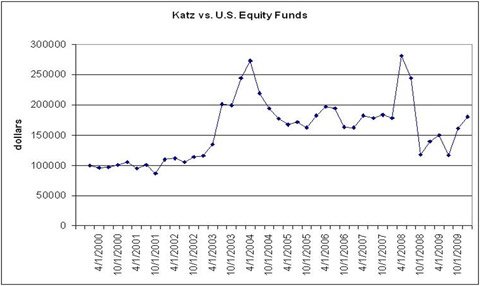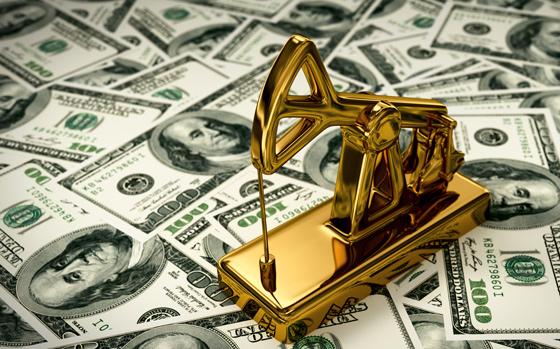My first financial newsletter was called “The Speculator.†My dictionary defines speculate as:
- “to engage in thought or reflection;â€
- “to buy and sell commodities, stocks, etc. in the expectation of a profit through a change in their market value.â€
- from Latin, speculatus, observed, examined:
I have always liked the word “speculate.†I enjoy the expectation of a profit made by buying and selling commodities and stocks. And I understand that such profit can only be made by thought or reflection.
In this I am a minority. You ask 99 out of 100 people who buy and sell commodities, and they will tell you that speculation is evil. They do not speculate, they will tell you. They are investors. However, to invest is “to put (money) to use.†An investor puts his money to use by placing it somewhere it can earn a return. That is, the investor is trying to avoid risk and so contents himself with the more modest returns he can get from such instruments as savings, accounts or blue chip stocks. The speculator is tempted by profit and hence is willing to engage in the thought or reflection necessary to discover whether stocks and commodities are going up or down. His profit is his reward for doing the intellectual work of discovering the truth.
Unfortunately, most people in the markets want the profits of the speculator, but they are not willing to do the work of searching out the truth. They call themselves investors, but they act like speculators. They act like speculators (buying and selling commodities and stocks in expectation of a profit), but they do not want to admit that they are speculators.
Poor fools! How can you succeed at something when you will not admit to yourself that you are doing it?
We are now coming up to the end of the first decade of the 21 st century. Ten years ago I challenged all the stock mutual funds in the country to a race – the race of the century. My current financial letter, the One-handed Economist, keeps a Model Conservative Portfolio. We started out on Jan. 1, 2000 with a theoretical $100,000 (suitable for a person who wanted his money to grow for retirement). In each issue of the One-handed Economist, I report on the Model Conservative Portfolio and make my recommendations on what to buy, sell or hold. A subscriber who followed these recommendations faithfully from Jan. 1, 2000 to the present has seen his money grow from $100,000 to $180,000 (or a proportional amount if he started with a different amount of money).
What have U.S. Equity Funds done? Well, if you put $100,000 into them on Jan. 1, 2000, then your present value (estimated) is $99,000. In other words, they are just about even. This is very interesting given what these people are always telling us. They are telling us the same thing that they said back in the late 1960s. “Buy and hold good sound stocks for the long pull.â€
That didn’t work out too well in the 1970s. From 1966 to 1982, the DJI lost
74% of its value in real terms. Your nominal stock value dropped by 20% (from 1000 to 800 DJI), and the value of the dollar dropped by 2/3. In real value, you had just over one-quarter of the wealth with which you started. Yet here they are telling you the same foolish thing in the 21 st century. (In real value, gold multiplied by a factor of 12 from 1970 to 1980, but the
 establishment was trashing gold circa 1970 (with Congressman Henry Reuss chairman of the House Banking Committee, predicting that it would fall from $35 to $6 or $8 per ounce).
establishment was trashing gold circa 1970 (with Congressman Henry Reuss chairman of the House Banking Committee, predicting that it would fall from $35 to $6 or $8 per ounce).
What is it that these establishment advisors are doing? They are doing the same thing of which they accuse the gold bugs. They pick one (type of) economic good and stick to it through thick and thin. They are like a Johnny-one-note, always singing the same song. (The only time they briefly gave up their song was in 1982. At that time, they became bearish on stocks and started to scream “sell,†following Henry Kaufman.
It is true that many gold bugs make the same mistake. They are equally Johnny-one-notes. After making fantastic profits in the 1970s, they stubbornly clung to gold from 1980 to 1999. Ouch.
Can’t anybody see this? Economic goods fluctuate in value. Sometimes they get too low in value, and sometimes they get too high in value. It is a challenge to the good speculator to correctly determine whether the particular good in which he is interested is too low or too high. Therefore, he cannot be either a stock bug or a gold bug all the time.
Look, gold was terribly undervalued at $35 in 1970. It was terribly overvalued at $875 in (early) 1980. Stocks were undervalued at 800 DJI in 1982. They were terribly overvalued at 14,200 DJI in 2007. I understand that this is easier to see in hindsight than to call in real time. But when you decide to become a speculator, this is what you have to do. If you want to speculate (because you like the profits), then you have to admit this to yourself. You are not fooling me. I can see that you are not an investor. You are only fooling you. And since you are the person you like most in the world, it would be a real shame to fool yourself.
While most financial advisors are Johnny-one-notes, I have made a rational study of when goods are undervalued and when they are overvalued. I first became a gold bug in 1965. I quit gold in 1980 and became a stock bug in 1982. I then remained a stock bug for most of the next 25 years (stepping aside on Oct. 1, 1987 to avoid what later became known as Black Monday). I became a gold bug again in December 2002 upon completion of a saucer bottom. (This led to an unusual period of overlap from 2003-2007 in which both gold and stocks were going up. During this time one had to figure which was going up faster, and this was a tough call.)
The solution to the undervalued/overvalued problem lies with a phenomenon I call the commodity pendulum. Like many famous discoveries it was very hard to see originally, but now that I am comfortable with it, it seems so obvious that I cannot understand why everyone else keeps missing it. Here is the commodity pendulum.
When John Kennedy cut taxes in 1963, he created a long term budget deficit, which is still with us here 46 years later, and he financed that deficit by printing money. I am sure you understand that, when money is increased, its value goes down, and the average price of goods (expressed in that money) must go up. However, all goods do not go up uniformly. We have just seen real estate prices explode to the upside from 1997-2007. Then they collapsed from 2007 to 2009.
Well, when prices first started to rise, in the 1960s, commodity prices got out of sync. They remained constant from 1963-1971. Since consumer goods were rising, this meant that in real terms commodity prices became undervalued. This is why they had a powerful bull market in the 1970s. They were going from undervalued to overvalued. This is why commodities declined from 1980 to 1999. They started out too high and then carried the decline too far. In 1999-2001, commodities were extremely under valued, and they are just beginning to move up, but they still have a long way to go.
What the Government (which caused the commodity pendulum in the first place) has to do for the good of our society is to stop printing money. This will allow commodities to damp down their swings, and the country can have a return to (real) economic growth. The Government needs to undo the idiocy of the Kennedy tax cut of 1963. But the Government has no intention of this. So while you work politically for a rational economic system which rejects paper money, you must also use the commodity pendulum to order your own affairs so that you make the greatest possible profit.
My original prediction of the price of gold at the end of this second upswing in the commodity pendulum is $3500/oz. The argument here is that the high for gold on the first upswing of the commodity pendulum (1971-1980) was $875. Since that time, general prices in the U.S. have multiplied by 2.5. And 2.5 x 875 = 2187. Throwing in another factor of 1.6 to account for further price increases over the next decade we get a price objective for gold of $3500. This, by itself, would be a fabulous move. But there is more to come.
As you know, Obama has projected trillion dollar deficits for the remainder of his first term of office. He will not raise taxes to pay the deficits. Rather, he will simply print money. This 4 trillion dollar increase in the U.S. money supply plus Bush’s trillion, totaling a 5 trillion increase, amounts to a 7-fold increase in the money supply (from the $900 million of mid 2008). If we figure a 7-fold increase in prices over the next 5-10 years, then we need to multiply our original $3500 target by 7, which gives us $24,500. If Obama does what he says he is going to do, then the $24,500 figure will be closer to the truth. If not, then the $3500 figure will be closer to the truth.
If you want an overview of what is happening here, then study the collapse of the British pound in 1947-48. In the 19 th century, the sun never set on the British Empire, and the pound was the world reserve currency. Then the Labor Party (dominated by socialists and Keynesians) came to power in 1945. They brought in Keynesian advisors who depreciated the currency to pay for a host of social programs. The British pound collapsed. The British Empire collapsed, and the heroic nation which had defeated both Napoleon and Hitler shrank into a caricature of its former self. This is an exact replica of Obama’s program. Change? Not a chance.
We know what the effects of Obama’s program have been in every country in which it has been tried. They are always the same. The people of the country become poor.
It is too early to say whether Obama will succeed in implementing his welfare state. If he is defeated, say by a Democratic loss in the 2010 election, then effectively America will continue to be America, and the parallel with 1940s Britain will cease to be valid.
But whatever happens, America will need a class of new rich to rebuild the country from the disastrous policies now being followed. It is your responsibility to become one of these new rich, and it is my responsibility to show you how. For the first 11 months, my Model Conservative Portfolio has gained $40,000 in value (for a subscriber who followed all my advice). Set this against the $300 annual cost of a year’s subscription to the One-handed Economist. So I think that I am capable of doing my part, and I challenge you to do your part in defeating the strange new world of the future.
Gold had a wonderful month in November. It was up (almost) 13%, and there were repeated gaps in GLD and many of the individual gold stocks. This speaks of POWER. If you are afraid that gold is too high, let me tell you of an investment (speculative) conference I attended in late 1972. It was full of radical gold bugs, which in 1972 meant people who thought that gold would go from $35 (its low in 1970) to $70. By the time of the conference, it had reached $65, and it stalled there for 6 months. One of the speakers, a traditional $70 man, disappointed the audience by announcing his change of opinion. He was giving up the hope that gold would ever hit $70.
In early 1973, gold shot up above $70. By mid ‘73, it had hit $125. By early 1974, it was $175. Now we look back on the $70 price, and it seems so low that the whole situation is laughable. This gentleman was up too close to events. He was not looking at the big picture. In this same way, those today who think that gold is high because it has moved from $1,000 to $1,200 are not looking at the big picture. Giant moves occur in the financial markets again and again. But they never bring money to those who are too close to events. When gold actually gets too high, it will tell us by several signals: 1) Silver will start to outpace gold. 2) The speculative gold exploration companies (on the CDNX) will come alive and start to outpace the HUI. Great excitement will sweep the gold community, and the investment conferences of the 1970s may return. As long as none of these things have happened, this gold bull market has a long way to go.
In order to make you rich, I publish a small financial letter called the One-handed Economist. It costs $300/yr., and you may subscribe through my website, www.thegoldspeculator.com. I also blog on political and social events at www.thegoldspeculator.blogspot.com. My current blog is on the war in Afghanistan and on foreign policy in general.
# # #










0 Comments